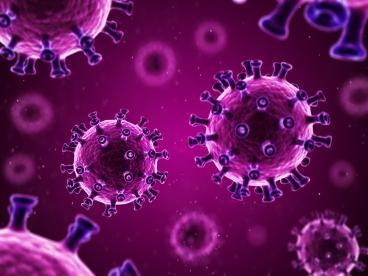There are an average of 45,000 new COVID-19 cases in the United States daily, an increase of 8% from the previous week. States that were already on an upward trajectory are getting worse and hospitalizations are on the rise, not only in the Midwest, but in other regions as well. With states working to respond to the spike, the vaccine development community continues to build new resources to facilitate international collaboration and share information with the public.
New Spikes in Cases
There are on average 45,000 new COVID-19 cases in the United States daily, an increase of 8% from the previous week. States that were already on an upward trajectory are getting worse and hospitalizations are on the rise, not only in the Midwest, but in other regions as well. To address the surges, Wisconsin is standing up field hospitals and New York City enforced lockdowns in nine different zip codes. COVID-19 is the third leading cause of death in the U.S., with many experts estimating the death toll to increase in the coming winter months when seasonal illnesses tend to peak.
Remdesivir
In May, the Food and Drug Administration (FDA) authorized the emergency use of Remdesivir. A recent study showed the antiviral drug shortens the hospitalization stay of COVID-19 patients by five days and is especially effective for those on low-flow oxygen treatment. However, it does not decrease risk of death. The CEO of Gilead, the drug manufacturer of Remdesivir, stated there is ample amount of supply of the drug, which can be helpful in saving scarce resources.
Moderna Will Not Sue; Allele Biotechnology and Pharmaceutical Does
Moderna President announced this week that they will not seek legal action on any pharmaceutical company that used their patented technology to develop a COVID-19 vaccine. Moderna was one of the recipients of the $2 billion investment made by the U.S. government in funding COVID-19 vaccine development, an initiative called Operation Warp Speed. Though Moderna’s vaccine has shown promising results, Moderna has never brought a product to market or gotten any of its vaccine candidates approved for use by FDA. This is in contrast to Allele Biotechnology and Pharmaceutical’s recent lawsuit claiming that Pfizer, BioNTech and Regeneron’s COVID-19 therapeutics used their patented technology without permission.
Nobel Prize in Chemistry and COVID-19
This year’s Nobel Prize in Chemistry has been awarded to Jennifer Doudna and Emmanuelle Charpentier for their discovery and elucidation of broad application of CRISPR/Cas9 DNA editing. CRISPR/Cas RNA editing has been applied to viral diagnostics development, most recently to create a streamlined method to amplify and detect SARS CoV-2. This method is based on a CRISPR/Cas13 system. In this case, the Cas13 protein is programmed to bind viral RNA, and is then activated to cleave surrounding RNA including synthetic “reporter” RNA that signals the presence of virus.
FDA Launches Informational COVID-19 Vaccine Resource
FDA has launched a dedicated COVID-19 vaccines webpage, an information hub for FDA guidance, news, and communications related to COVID-19 vaccine development. Links to the recently issued Guidance on Emergency Use Authorization for COVID-19 Vaccines are provided along with recent remarks and public testimony from FDA leadership, informational podcasts, and current journal publications. The EUA guidance describes the information needed for an EUA and addresses CMC, non-clinical, and clinical studies, including expectations for an acceptable safety database, for risk-benefit considerations.
Antiviral Cocktail Used Against HIV Is Ineffective Against SARS-CoV-2
A large prospective clinical study involving more than 5,000 patients across 176 U.K. hospitals compared a range of potential treatments for hospitalized COVID-19 patients. The lopinavir–ritonavir cocktail, a combination of drugs used to treat AIDS, did not improve chances of survival in hospitalized COVID-19 patients, even though “in-vitro” (i.e., “in a test tube”), lopinavir had been shown to inhibit SARS-CoV-2 activity, and the lopinavir–ritonavir combo had been shown to reduce clinical symptoms of COVID-19 in ferrets. Previous studies of the lopinavir–ritonavir in humans were either retrospective (i.e., re-analyzing data available from other studies which were not designed to focus on the effects of this particular treatment), or small in size (i.e., involving too few patients to enable a robust analysis), and produced mixed results. The lopinavir–ritonavir arm of the study has now concluded. The trial continues to study the effects of azithromycin, tocilizumab, convalescent plasma, and REGN-CoV2 (a still-experimental combination of REGN10933 and REGN10987, which most recently was used to treat President Donald Trump under “compassionate use”). Full details of the study design, ongoing trials, recruitment, and findings are publicly available at the Recovery Trial website.
International Private-Public Partnership Establishes Standardized Test to Compare Vaccines
An international public-private partnership, the Coalition for Epidemic Preparedness Innovations (CEPI) recently announcedthat it is establishing labs and standards for a uniform assessment of various COVID-19 vaccines. Based in Norway, CEPI works with a global network of laboratories and partners. CEPI has also helped fund several of the ongoing efforts by pharmaceutical companies to develop COVID-19 vaccines.
Medicine by Telephone Will Likely Transform Into Hybrid Model Post-Pandemic
Telemedicine has proven its value during the COVID-19 quarantines, lockdowns, travel restrictions and other disruptions. Its importance has been recognized at the highest levels of U.S. government agencies. Previous regulatory barriers to telehealth delivery have come down. Moreover, telehealth is also seen as a way to expand access to medical care more uniformly and to provide care to under-resourced areas.
At the same time, a realization is growing that telemedicine cannot completely replace the in-person care and real-life interaction between health care providers and those under HCPs’ care in the long run. The task ahead, then, is to identify the best aspects of telemedicine as well as of the “in-person” medicine to take forward, so that the two approaches would supplement each other for the most efficient, beneficial and timely care that still has the patient’s best interests at the center.








 i
i


